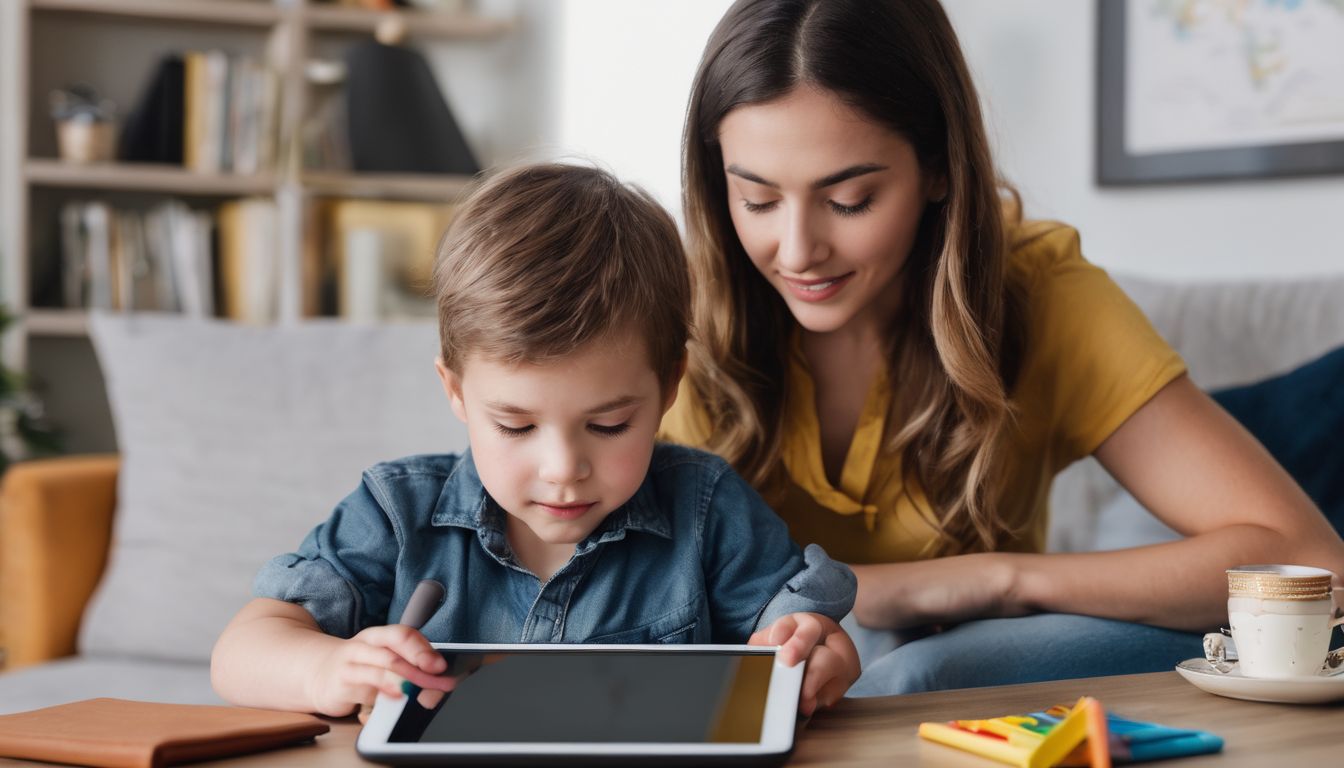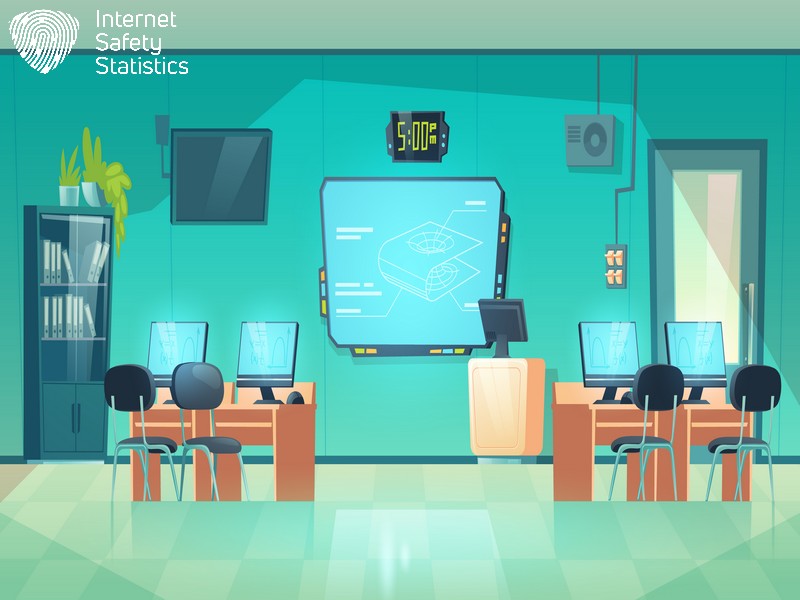
The integration of technology into classrooms offers a wealth of educational opportunities. However, educators face the challenge of fostering a safe and productive online learning environment. Parental controls emerge as valuable tools in this endeavour. This guide explores various parental control features and functionalities available on educational platforms. We’ll explain how educators can leverage these tools to create a safe and focused digital learning experience for students, fostering a collaborative environment where parents and teachers play a vital role in a child’s online education journey.
Dive in for essential tips on making tech work for everyone’s benefit.
Benefits of Digital Learning for Students
Digital learning offers personalised and competency-based education and the opportunity to develop partnerships with the community.
Personalised Learning
Personalised learning tailors education to meet students’ unique needs, abilities, and interests. With digital tools, learners can progress at their own pace and have a more meaningful educational experience. Parents can support this individualised approach by employing parental controls in the digital classroom. They facilitate a focused environment where children access appropriate resources that align with their learning journey.
Parents are equipped with the “Parent and Family Digital Learning Guide, ” enabling them to effectively track and engage with their child’s personalised educational path. This guide assists both parents and educators in understanding how technology can best complement traditional teaching methods for maximum benefit to the student’s growth.
In conjunction with carefully managed screen time limits and internet restrictions, these strategies ensure students stay on task while securely exploring the digital world. Moving from customised learning experiences towards competencies is another step forward. Competency-based learning focuses on mastering skills at one’s speed before advancing – a strategy enriched by digital tools that offer varied ways for children to demonstrate what they’ve learned.
Competency-Based Learning
In competency-based learning, students progress at their own pace, mastering skills. This approach focuses on student understanding rather than time spent in the classroom, allowing for personalised learning experiences tailored to individual needs.
With parental involvement and support, children can benefit from this method by building a strong foundation in each study area before moving on to more advanced concepts. Educators should continue to learn about new technology that enhances teaching methods and helps parents monitor their child’s progress effectively.
By embracing competency-based learning, educators can better prepare students for future success and ensure that digital classrooms are utilised efficiently. Children engage with educational technology while parents monitor progress and maintain a healthy balance of digital habits.
Developing Partnerships with Community
Educators can foster strong partnerships with the community by involving parents, local organisations, and businesses in supporting digital learning initiatives. Collaborating with families helps to create a shared understanding of technology use in education while engaging local groups can provide resources and expertise to enrich the digital classroom experience. By building these partnerships, educators can ensure students can access a supportive network beyond the school environment.
Involving external stakeholders like parents and local organisations creates a collaborative approach towards digital education, enhancing student learning experiences. This collaboration emphasises the importance of community support in creating a safe and effective digital learning environment for children.
Enabling Digital Learning
Providing personal learning devices and ensuring internet access are essential for students to engage in digital learning. Educators must also prioritise safety, privacy, and responsible technology use in the digital classroom.
Providing Personal Learning Devices
Equip your child with the necessary tools for successful digital learning. Here are some key points to consider:
- Invest in a reliable and age-appropriate device, like a laptop or tablet, to support your child’s educational needs.
- Ensure the device has access to necessary educational apps and resources, promoting an enriching learning experience.
- Set up appropriate parental controls and privacy settings on the device to ensure a safe and secure online environment.
- Consider implementing time management tools to regulate screen time and encourage healthy technology habits.
- Regularly monitor your child’s use of the device to promote responsible technology usage.
Ensuring Internet Access
After providing personal learning devices, another essential aspect of enabling digital learning is ensuring internet access. Here are some ways to ensure that your child can access the internet for their educational needs:
- Internet Service.
- Wi-Fi Network.
- Internet Safety Measures.
- Mobile Data.
- Online Security Education.
- Accessibility Devices.
- Tech Support.
- Access Monitoring.
Safety, Privacy, and Responsible Technology Use
To promote safety, privacy, and responsible technology use in the digital classroom, parents and educators can work together to set clear guidelines for online behaviour. Monitoring children’s digital learning activities is crucial to ensure their safety and well-being. Parents can use parental control software such as K9 Web Protection to manage and filter internet access on their children’s devices to protect them from potentially harmful content.
Additionally, teaching children about cybersecurity measures like identifying trustworthy websites and not clicking on links from strangers helps instil responsible technology use at an early age.
Google Meet and Its Features

Explore the key features of Google Meet, including how to join a meeting, safety and privacy measures, and tips on keeping students engaged during class. Ready to learn more about parental controls in the digital classroom? Keep reading for valuable tips and resources to ensure safe and effective online learning for your child.
Joining a Meeting
To join a meeting, simply log in to the scheduled Google Meet session using the teacher’s link or the Google Calendar event. Here’s how you can ensure a seamless experience:
- Before joining, ensure you are in a quiet, well-lit space with all the necessary materials.
- Click on the meeting link or access it from your Google Calendar at the designated time.
- Once in the meeting, use the microphone and camera controls if required, and engage with the class by participating actively.
- Respect others by muting your microphone when not speaking and following classroom rules for online behaviour.
- Encourage your child to ask questions and interact with their peers and teachers during the session, as this will help foster their engagement with digital learning.
- Stay attuned to privacy guidelines during virtual meetings and encourage safe and respectful student communication.
- Support your child as they navigate through any technical issues during the session, ensuring they can fully participate in their digital classroom experience.
Safety and Privacy Measures
Ensuring safety and privacy in the digital classroom is crucial for children’s online education. Here are some important measures to consider:
- Setting up parental control guides to manage and monitor children‘s technology use, including networks, gadgets, apps, and websites.
- Utilising tools like K9 Web Protection, a free Internet filter and parental control software that can be installed on Windows or Mac computers to provide a safe online experience for children.
- Teaching children how to identify trustworthy websites and avoid clicking on links from strangers is essential to their digital literacy education.
- Educating parents about the importance of setting up the right controls and privacy settings on their home networks and personal devices to ensure safe and secure online learning for their children.
- Implementing defined policies and procedures in the classroom to create a safe online environment for students, enabling them to utilise class time most efficiently.
- Collaborating with parents to develop guidelines for promoting cyberbullying prevention by monitoring technology in education.
- Emphasising the significance of parents’ attitudes and experiences related to digital technology when implementing parental controls in the digital classroom, aiming to build a supportive partnership between educators and families.
- Providing resources for parental involvement in the use of technology in an early childhood setting, fostering a collaborative effort between educators and parents towards supporting children’s digital literacy education.
- Encouraging continuous learning about new technology among educators to enhance teaching methods with innovative tools while keeping safety and privacy at the forefront of digital learning practices.
Engagement During Class
Teachers can encourage student engagement during virtual classes by using interactive features such as live polls and Q&A sessions. Here are some strategies to enhance engagement during online classes:
- Utilise breakout rooms for group discussions and collaborative activities, allowing students to participate actively in smaller group settings.
- Incorporate multimedia elements such as videos, interactive quizzes, and virtual field trips to make lessons more engaging and dynamic.
- Encourage active participation through open-ended questions, encouraging students to share their thoughts and ideas during class discussions.
- Implement interactive whiteboards and annotation tools to promote real-time collaboration and active involvement in the learning process.
- Leverage gamification techniques, such as educational games and competitions, to create a fun and engaging learning environment for students.
Tips and Resources for Engaging Families

Educators can engage families by offering workshops and presentations on digital learning, encouraging them to earn a Common Sense Education badge, and providing tools like family tech planners.
Workshops and Presentations for Parents
Parents and caregivers can benefit from attending workshops and presentations to gain valuable insights into managing their child’s digital learning. Here are some resources available to support parents in navigating technology in the educational setting:
- “Parent and Family Digital Learning Guide“: This guide provides step-by-step instructions for monitoring a child’s progress and ensuring safe and responsible technology use.
- Common Sense Education badge: Parents can participate in workshops to earn this badge, equipping them with the knowledge to navigate digital learning resources, online safety, and privacy measures.
- Family tech planners: These resources offer practical tips for managing children’s digital learning at home, promoting a balanced approach to technology use.
Common Sense Education Badge
The Common Sense Education badge offers a valuable resource for parents and educators. It equips them with the knowledge and skills to guide students in safe, responsible, and informed technology use. This badge provides practical strategies for promoting digital literacy, understanding online safety, and fostering healthy digital habits. By earning this badge, educators can effectively engage families in discussions about setting boundaries for screen time and promoting positive online behaviour.
Parents who earn the Common Sense Education badge gain access to tools and resources that help them navigate the digital landscape with confidence. They receive guidance on monitoring their child’s progress in using technology for learning purposes while ensuring a safe and secure online environment.
Family Tech Planners
To further support families in digital literacy, the Common Sense Education badge can be complemented by family tech planners. These planners can help parents, office workers, and internet users to manage and monitor their child’s technology use effectively. Below are some essential features of family tech planners:
- Daily screen time limits can be set to ensure a healthy balance between online and offline activities for children.
- Parental control settings can be adjusted to filter inappropriate content and restrict access to certain websites or applications.
- Monitoring tools provide insights into a child’s online activities, including websites visited and time spent on specific apps.
- Usage reports offer a detailed overview of a child’s digital habits, enabling informed discussions about responsible technology use.
- Family agreements or contracts set clear expectations and rules around technology usage within the household, promoting open communication and accountability.
- Resources for digital citizenship education can be integrated into family tech planners to help children understand online safety and responsible behaviour.
- Collaboration features allow parents to coordinate their efforts in managing technology use across multiple devices and platforms.
- Regular updates and information on emerging digital trends ensure families stay informed about potential risks and best practices for safe online learning.
- Compatibility with various devices ensures that family tech planners can be seamlessly integrated into different technological environments for comprehensive parental control.
- Educational resources within family tech planners enable parents to enhance their digital literacy skills, fostering a supportive learning environment at home.
The Role of Parents in the Digital Classroom
Parents play a crucial role in monitoring their children’s progress and ensuring they participate in virtual meetings. Parents must set healthy digital habits for their children to promote safe and responsible technology use.
Monitoring Progress
To monitor your child’s progress in the digital classroom, consider the following:
- Utilise the “Parent and Family Digital Learning Guide” to track your child’s use of technology for learning and ensure their academic growth.
- Use defined classroom technology policies and procedures to track your child’s engagement and participation in virtual classes.
- Stay informed about what is due and completed by your child using Google Classroom, ensuring they keep up with their assignments and meetings.
- Teach your child how to identify trustworthy websites and avoid clicking on links from strangers.
- Familiarise yourself with parental control guides to set up the right controls and privacy settings on your child’s networks, gadgets, apps, and sites.
- Participate in workshops and presentations designed for parents to learn about digital education resources, family tech planners, and how to use technology to support your child’s learning.
- Learn about new technology to improve your ability to support your child’s learning journey through digital education.
Participating in Virtual Meetings
To further support your child’s digital education, participating in virtual meetings is a key way to stay engaged and involved in their learning journey. Here are some practical tips and strategies for making the most out of virtual meetings:
- Schedule regular check-ins with your child’s teacher to discuss their progress, any challenges they may be facing, and how you can support their learning at home.
- Actively participate in parent-teacher conferences conducted through virtual platforms to gain insights into your child’s academic performance and receive personalised feedback from their teachers.
- Engage in collaborative discussions with other parents through online forums or group chats to share experiences, seek advice, and build a supportive network within the school community.
- Utilise video conferencing features to attend school events, such as assemblies or special presentations, allowing you to stay connected with the school community and celebrate your child’s achievements.
- Encourage open communication between yourself, your child, and their educators during virtual meetings to ensure everyone is aligned on academic expectations and goals.
- Seek professional development opportunities the school offers to enhance your knowledge of digital learning tools and resources, enabling you to support your child’s educational journey fully.
Setting Healthy Digital Habits for Children

Children’s healthy digital habits should be nurtured early, with clear guidelines for screen time and device usage. Encouraging outdoor play and offline activities is essential in developing a balanced approach to technology. Additionally, providing children with opportunities for open discussions about online safety and responsible internet use can help them make informed choices when navigating the digital world.
Parents can promote healthy digital habits by setting a good example, modelling mindful tech use and including their children in conversations around appropriate online behaviour. Furthermore, staying informed about various parental control tools and ensuring that devices have activated security features are crucial in safeguarding children’s online experiences.
Educators are crucial in guiding parents towards effective parental controls in the digital classroom. Teachers can empower parents to monitor their child’s progress and ensure safe and secure online learning experiences. By providing resources and support, educators can foster an environment where technology is used purposefully for education and family engagement. Parents can actively participate in their child’s digital education journey with clear guidelines and ongoing communication.
FAQs
1. What are parental controls in the digital classroom?
Parental controls in the digital classroom help families engage safely with technology, enabling them to monitor student progress and ensure their children’s online learning is secure.
2. How can educators support families in using digital learning resources?
Educators can provide guidelines for online learning and share digital resources that enhance family engagement while supporting students’ education at home.
3. Why is involving parents in their child’s digital education important?
Engaging parents in digital education fosters a partnership between home and school, which promotes student success and maintains open communication about technology use.
4. What strategies can parents use to contribute to remote learning?
Parents can utilise remote learning strategies such as monitoring their child’s use of digital devices, understanding classroom management practices, and implementing recommended safety measures.
5. How do we promote safe online learning environments for students?
Schools promote a safe and secure online learning environment that benefits everyone involved by educating students and families on digital literacy.
